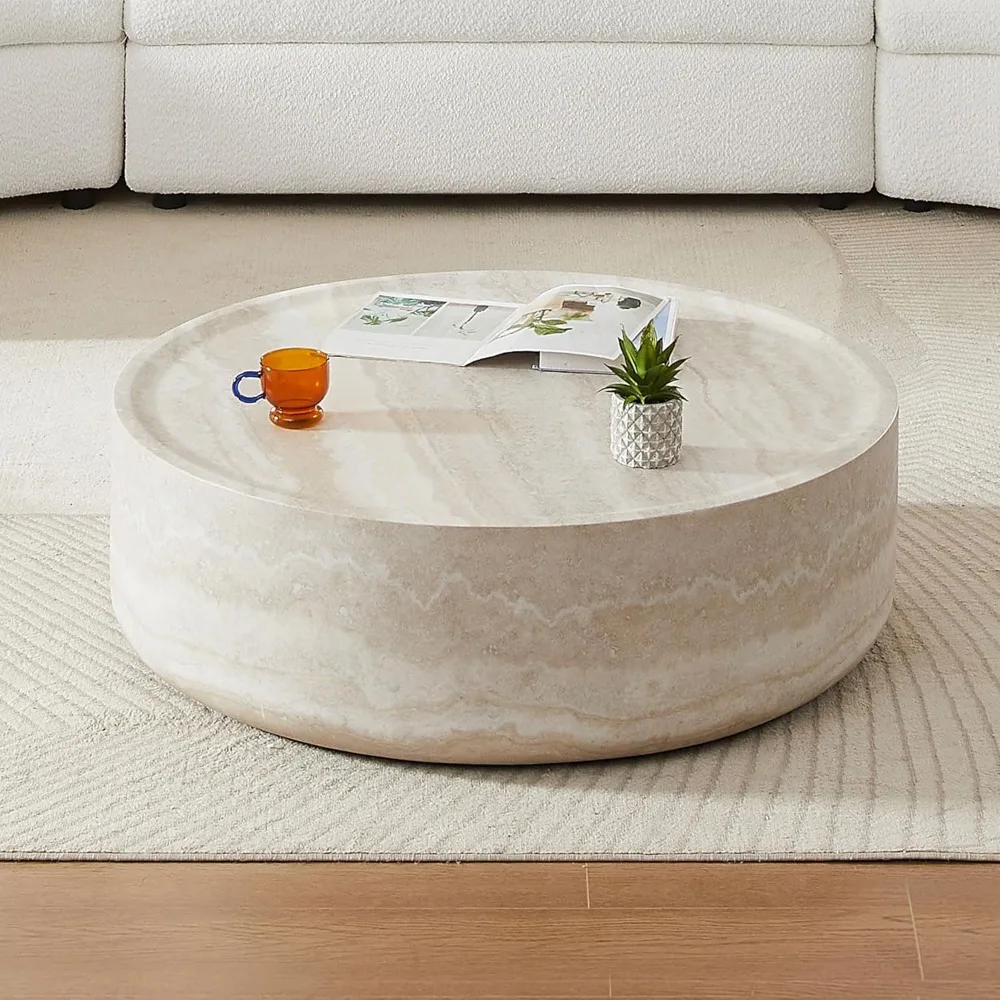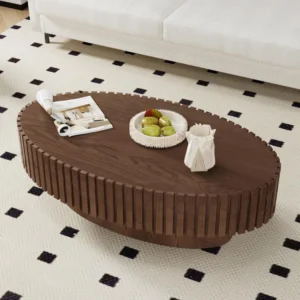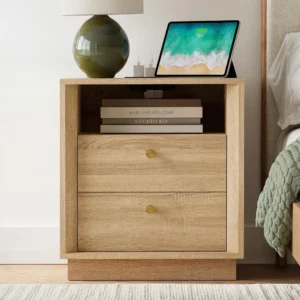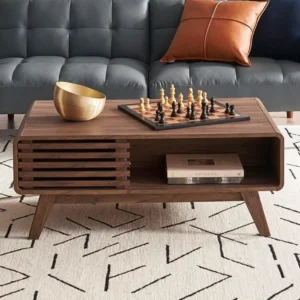Understanding Teak’s Natural Splendor
Teak stands apart in the world of furniture materials as a truly exceptional wood. Its remarkable durability allows pieces to last for generations, while its natural oils provide outstanding resistance to moisture, insects, and decay. The wood’s warm golden-brown color develops a rich patina over time, transforming from honey-hued freshness to a distinguished silvery-gray if left untreated outdoors.
What truly sets teak apart, however, is its grain pattern—the distinctive arrangement of wood fibers that creates visual texture and character. In the realm of black mid-century coffee tables and other furniture styles, teak’s grain offers a natural complexity that synthetic materials simply cannot replicate.
Unlike the often heavy figuring of walnut or the prominent cathedral patterns of oak, teak typically features a straight, even grain interspersed with silky ribbons and subtle variations. This makes it particularly valued in mid-century modern design, where its understated elegance complements clean lines and organic forms without overwhelming the overall aesthetic.
Each teak piece tells a unique story through its grain. As trees grow, they form annual rings that reflect seasons of growth—wider rings during favorable conditions, narrower during stress. These growth patterns, combined with the tree’s response to environmental factors, create nature’s signature in the wood, ensuring no two pieces are identical.
The appeal of teak extends beyond mere appearance, as its grain structure contributes significantly to its legendary stability and strength. When browsing mid-century modern teak coffee tables, notice how the grain provides both visual interest and structural integrity to these timeless pieces.
The Science Behind Teak’s Unique Grain Formation
The captivating grain patterns in teak furniture begin with the biology of the Tectona grandis tree itself. As these majestic trees grow, their cellular structure develops in response to various environmental factors, creating the visual textures we prize in finished furniture.
Growth rate plays a crucial role in grain development. Trees that grow slowly in denser forests typically produce tighter, more consistent grain patterns, while those with access to abundant sunlight and nutrients develop wider, more varied grain patterns. Environmental stressors like prevailing winds or challenging soil conditions can create reaction wood with unusual figuring, while the age of the tree significantly impacts character—older teak trees often develop more complex, interesting grain patterns with deeper color variations.
How the lumber is cut from the log dramatically affects the grain pattern revealed in the finished piece:
- Plain-sawn or flat-sawn cuts run tangential to the growth rings, creating broad, dramatic “cathedral” patterns where the grain forms arch-like figures
- Quarter-sawn cuts run perpendicular to the growth rings, revealing straight, ribbon-like grain patterns with remarkable stability
- Rift-sawn cuts are made at a 30-45° angle to the rings, producing very straight, linear grain with minimal figuring
- Cross-section/slab cuts reveal the concentric history of the tree’s growth, creating striking circular patterns
The cellular composition of teak contains vessels, fibers, and ray cells that transport nutrients and provide support. When cut, these structures create the visual patterns we see—vessels appear as tiny pores, fibers form the main grain lines, and rays create subtle flecks perpendicular to the main grain direction.
Understanding these elements helps in appreciating why certain pieces in our solid wood coffee tables collection display such distinctive character. The detailed knowledge of wood grain is also valuable when exploring teak grain quality and characteristics in your furniture selections.
Classic Straight Grain: The Timeless Foundation
Straight grain teak represents the quintessential foundation of mid-century modern furniture design. This classic pattern features parallel lines running consistently along the length of the wood with minimal deviation—a characteristic highly prized for its clean, orderly appearance. The grain appears as evenly spaced lines that follow the natural growth direction of the tree.
Despite its name, truly straight grain still contains subtle variations that add depth and character. These minor undulations, slight color shifts, and occasional small knots contribute to the wood’s natural charm without disrupting the overall clean aesthetic. Under changing light conditions, even the most uniform straight grain reveals delicate nuances that bring the furniture to life.
Furniture makers frequently choose straight grain teak for larger pieces where structural stability is essential. The consistent fiber direction provides exceptional strength while maintaining the streamlined appearance valued in mid-century design. The absence of dramatic figure allows other design elements to take center stage while still providing natural warmth.
The predictable nature of straight grain also showcases teak’s unique ability to develop a beautiful patina over time. As the surface interacts with light, air, and gentle use, straight grain teak develops a rich, silken luster that distinguishes authentic pieces from imitations. Many Danish coffee tables exemplify this perfect marriage of straight grain elegance and thoughtful design.
Wavy and Curly Grain: Nature’s Elegant Undulations
Wavy and curly grain patterns represent one of nature’s most captivating displays in teak furniture. These distinctive patterns occur when wood fibers grow in undulating formations rather than straight lines, creating visual movement across the surface. While straight grain provides elegant simplicity, wavy grain introduces dynamic character through rhythmic ripples that catch and reflect light.
The visual effect is remarkable—as you move around a piece with wavy grain, light interacts differently with each area, creating a three-dimensional appearance that shifts and changes. This phenomenon, known as chatoyance, produces a silky, almost iridescent quality that gives the furniture surface exceptional depth and life.
Skilled furniture makers strategically incorporate these patterns as focal points in their designs. A table might feature a wavy grain top paired with straight grain legs to balance visual interest, or a cabinet door might showcase a particularly dramatic section to create a natural focal point. When considering styling options for coffee tables, these grain variations provide built-in visual interest.
The finishing process significantly enhances wavy grain patterns. Oil finishes tend to penetrate the varied fiber directions differently, accentuating the dimensional quality, while clear lacquers create a smooth surface that highlights the undulations beneath. Either approach preserves the tactile quality that makes these pieces so inviting.
Furniture featuring well-defined wavy or curly grain typically commands premium prices due to its relative scarcity and visual appeal. These patterns occur less frequently in nature and require expert cutting and finishing to showcase properly, making them particularly desirable to collectors and design enthusiasts.
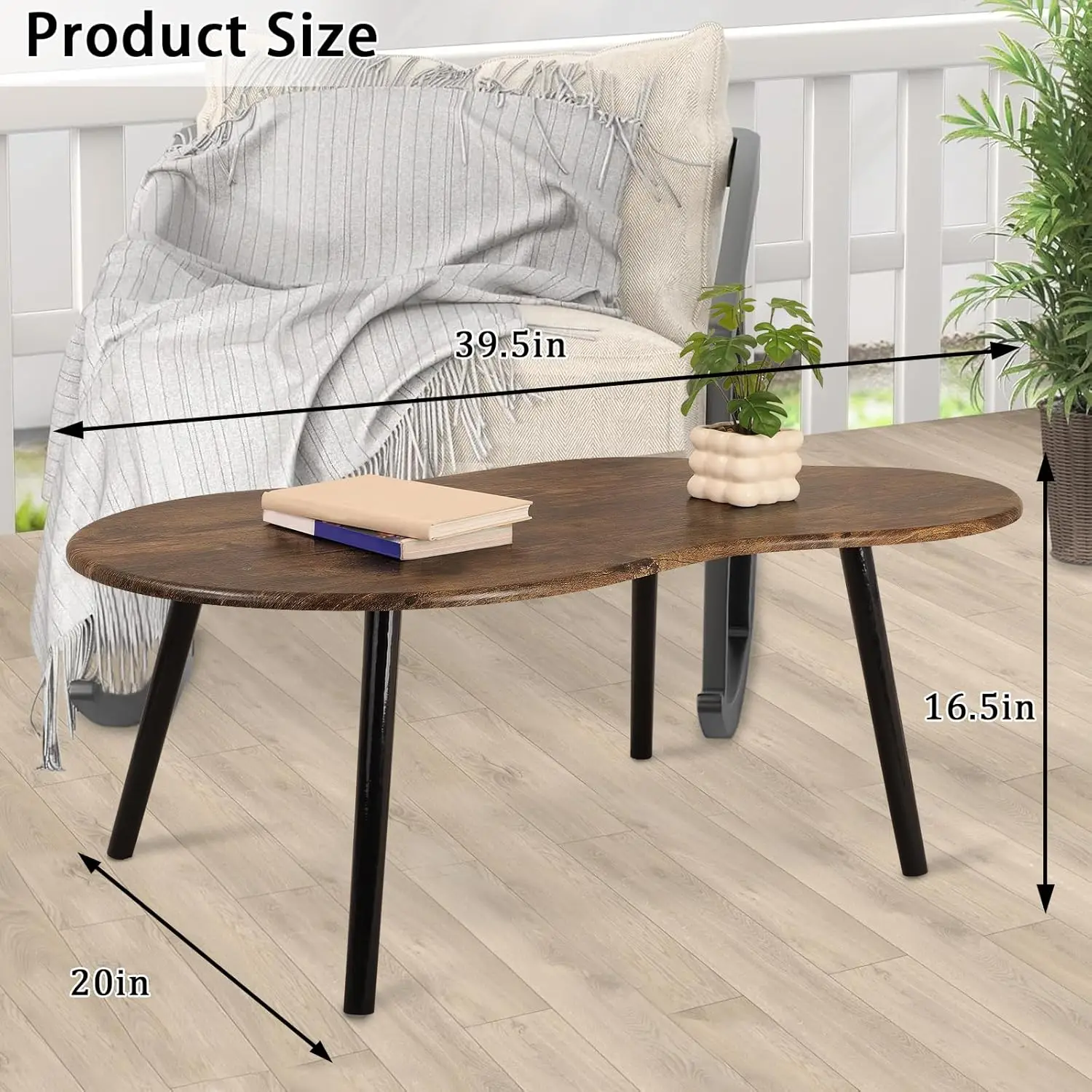
Interlocked and Ribbon Grain: Dynamic Movement in Wood
Interlocked grain represents one of teak’s most fascinating structural characteristics. Unlike straight grain where fibers grow consistently in one direction, interlocked grain forms when wood fibers grow in alternating spiral patterns—changing direction between growth layers. This natural phenomenon creates remarkable visual effects when the wood is properly cut and finished.
When quarter-sawn, interlocked grain produces striking ribbon-stripe effects—alternating bands of light and dark that run perpendicular to the main grain direction. These stripes aren’t merely surface patterns but represent the actual structure of the wood, with each light and dark band showing where the grain direction changes. The result is a surface with remarkable visual movement that seems to shimmer as viewing angles change.
Working with interlocked grain presents both advantages and challenges. The alternating fiber directions provide exceptional dimensional stability and split resistance—making it ideal for pieces that need to withstand environmental changes. However, this same characteristic requires specialized tools and techniques during manufacturing to avoid tearout and achieve smooth surfaces.
Interlocked grain particularly enhances curved furniture elements, as the multidirectional fiber structure follows organic forms naturally. Many vintage coffee tables feature this grain pattern in curved aprons, legs, or shaped surfaces where the dynamic visual movement complements the physical form.
The distinctive ribbon-stripe effect creates a sense of sophistication that distinguishes fine teak furniture. When light strikes these surfaces, the alternating bands create subtle shadows and highlights that bring the wood to life, adding a dimension of movement to even the most minimalist designs.
Highly Figured Grains: Nature’s Rarest Masterpieces
Among teak’s grain variations, highly figured patterns represent nature’s most exceptional artistic expressions. These rare formations result from unusual growth conditions, genetic factors, or stress responses that create dramatic, eye-catching patterns prized by collectors and designers alike.
Fiddleback and Tiger Stripe figured teak displays rhythmic, rippled patterns perpendicular to the grain direction. This creates a wavy, three-dimensional appearance that shifts dramatically with changing light. The pattern resembles the back of a violin (hence “fiddleback”) or the striping of a tiger, with alternating bands of light and shadow creating visual movement across the surface.
Burl or Burr patterns emerge from abnormal tree growth, often at stress points or around injuries. These formations create swirling, complex patterns with small “eyes” and twisted grain flowing in multiple directions simultaneously. Each burl pattern is entirely unique, like a fingerprint in wood, making these sections highly sought after for decorative elements and feature panels.
Quilted and Blistered figure presents as a three-dimensional, bubbled appearance with raised, cushion-like formations that seem to float above the wood surface. This rare pattern creates incredible depth and dimension, especially when finished to enhance its natural luster.
Mottled grain features irregular, blotchy patterns that break up the uniformity of the wood surface, creating areas of visual interest through color and texture variations. Though less dramatic than other figured patterns, mottled grain adds subtle character that distinguishes fine furniture.
These exceptional grain patterns command premium prices for several reasons—their natural rarity, the expertise required to properly cut and finish them, and their unmatched visual impact. Furniture makers typically showcase these dramatic grains in statement pieces where they become the focal point of the design.
When exploring different regional variations in teak grain patterns, you’ll find that growing conditions in different parts of the world contribute to the development of these unique characteristics, with some regions producing more figured wood than others.
Root and Crotch Grain: Organic Flow and Drama
Root and crotch sections of teak trees produce some of the most dramatically figured grain patterns available in fine furniture. These special cuts come from specific parts of the tree that experience unique growth stresses, resulting in swirling, dynamic patterns that capture attention and create visual focal points.
Root grain, harvested from the base section where the trunk meets the root system, features wild, swirling patterns that reflect the tree’s response to ground pressure and the transitional growth between vertical trunk and horizontal roots. The resulting grain patterns often radiate outward in flowing, organic movements that resemble abstract art created by nature itself.
Crotch grain comes from the section where major branches join the trunk—areas where the tree must develop complex supporting structures. These junction points create spectacular feathered or flame-like patterns as grain lines flow around the branch union. The visual effect resembles an explosion of energy frozen in wood, with dramatic sweeping patterns that draw the eye.
Furniture makers prize these sections for statement pieces where the wood becomes the central design element. A coffee table with a crotch grain top requires no further embellishment, as the wood itself provides all the visual interest needed. These dramatic patterns particularly complement mid-century modern organic forms, where the flowing lines of the furniture echo the natural movement in the wood.
The limited availability of these sections makes them especially valuable. From each tree, only a small percentage yields these dramatic patterns, and the cutting must be precise to properly reveal their beauty. When considering different wood species for your home, examining how they compare to teak can be valuable, as seen in our walnut coffee tables collection.
The Art of Selecting Wood: How Craftsmen Choose Grain Patterns
Master furniture makers approach wood selection with the discerning eye of an artist selecting canvas and paints. When working with teak, the grain pattern becomes a critical design element that influences every aspect of the finished piece—from visual impact to structural integrity.
The selection process begins with evaluating the character of the grain. Craftspeople examine not just the pattern but also its consistency, direction, and how it might interact with the intended design. For formal pieces with clean lines, straight and consistent grain might be preferred, while more organic, sculptural forms might benefit from dynamic figured patterns.
“Bookmatching” represents one of the most elegant techniques for showcasing grain. This method involves cutting consecutive slices from the same section of wood and placing them side by side like an open book, creating mirror-image patterns. The result is a symmetrical design that amplifies the wood’s natural beauty while demonstrating the maker’s attention to detail. Similar techniques include slip matching, end matching, and continuous grain wrapping around corners.
Grain direction significantly influences both aesthetics and structural integrity. When properly aligned with the furniture’s form, grain enhances visual flow and maximizes strength. For table tops, grain typically runs the length of the piece to provide optimal stability and minimize seasonal movement. For legs and structural components, straight grain aligned with the load direction provides maximum strength.
In mid-century modern design, grain selection often reflects the philosophy of “truth to materials”—allowing wood to express its natural character within a carefully controlled form. The clean lines and minimal ornamentation of this style create the perfect canvas for showcasing teak’s inherent beauty through thoughtful grain placement.
Understanding grain selection provides valuable context when identifying authentic teak furniture, as attention to grain direction and pattern matching often distinguishes fine craftsmanship from mass production.

Identifying Quality: Authentic Teak and Superior Grain
Distinguishing genuine teak with superior grain requires attention to several key characteristics that signal both authenticity and quality. As a discerning consumer, understanding these indicators helps you make informed choices when investing in fine furniture.
Genuine teak displays distinctive grain characteristics that imitations struggle to replicate. Authentic teak features a straight to slightly wavy grain with an uneven texture and oily feel due to its natural resins. The wood typically has a golden to medium brown color that, when freshly cut, often shows colorful highlights ranging from greenish to golden streaks that mellow with age. Imitations, whether stained lesser woods or manufactured products, lack this natural variation and often show artificially uniform color and pattern.
Close examination reveals more telltale signs: real teak has a distinctive, slightly sweet aroma when freshly cut or sanded. The wood also has a moderate weight—neither excessively heavy nor suspiciously light. When examining unfinished sections, genuine teak shows a slightly gritty texture due to silica deposits natural to the species.
Grain patterns also indicate quality grade within authentic teak. Premium grade typically features straight, even grain with minimal knots and consistent coloration. Standard grades show more natural variation, including some color differences and occasional small knots. Character or rustic grades display pronounced grain variations, knots, and color differences—valued by some for their distinctive appearance rather than considered defects.
A common misconception equates dramatic figure with superior quality. While figured grain may command higher prices for its rarity and visual appeal, straight grain often provides better stability for structural components. Quality assessment should consider the appropriateness of the grain pattern for the piece’s function, not merely its visual drama.
These insights complement your understanding of how wood grain influences different interior styles, as explored in our guide to black coffee tables in mid-century interiors.
Enhancing and Preserving Teak’s Natural Beauty
Teak’s distinctive grain patterns deserve proper finishing and maintenance to preserve their beauty for generations. The right approaches not only protect the wood but also enhance its natural character and allow it to develop the rich patina that makes vintage teak so desirable.
When finishing teak, less is often more. Unlike many other woods that require heavy protective finishes, teak’s natural oils provide inherent protection. The most traditional and effective finishing options include:
- Teak oil penetrates the wood and enhances grain visibility while providing modest protection
- Danish oil creates a slightly harder finish while maintaining the wood’s natural feel
- Wax finishes offer a soft luster that brings out grain depth without a glossy appearance
- Water-based sealers provide protection while maintaining the most natural color
Each finishing approach affects how grain patterns appear. Oil finishes tend to deepen color and enhance contrast between early and late wood, making grain patterns more pronounced. Clear sealers preserve the more natural color while still highlighting texture. The choice depends on whether you prefer the golden honey tones of freshly finished teak or the more subdued natural appearance.
To maintain teak’s beauty over time:
– Dust regularly with a soft cloth to prevent particle buildup that can dull the surface
– Clean periodically with mild soap and water, avoiding harsh chemicals
– Re-oil or re-wax as needed when the surface begins to appear dry (typically once or twice yearly)
– Keep furniture out of direct sunlight to prevent uneven fading
– Use coasters and mats to protect against water rings and heat marks
For aged teak that has lost its grain definition, gentle sanding with progressively finer grits followed by appropriate refinishing can restore its original beauty. This process removes the surface layer to reveal fresh wood beneath while maintaining the character that comes with age.
These maintenance approaches help preserve the natural beauty of pieces like our solid wood side and end tables, ensuring their grain patterns continue to enhance your space for years to come.
Mid-Century Modern Solid Wood Coffee Tables, Mid-Century Modern Teak Coffee Tables
$879.95 Select options This product has multiple variants. The options may be chosen on the product pageMid-Century Modern Danish Coffee Tables, Mid-Century Modern Oval Coffee Tables, Mid-Century Modern Solid Wood Coffee Tables
$390.05 Select options This product has multiple variants. The options may be chosen on the product pageMid-Century Modern Glass Top Coffee Tables, Mid-Century Modern Vintage Coffee Tables, Mid-Century Modern Vintage Side & End Tables
$725.36 Select options This product has multiple variants. The options may be chosen on the product pageMid-Century Modern Oval Coffee Tables, Mid-Century Modern Solid Wood Coffee Tables
$679.56 Select options This product has multiple variants. The options may be chosen on the product pageMid-Century Modern Solid Wood Side & End Tables, Mid-Century Modern Vintage Side & End Tables
Price range: $347.99 through $376.99 Select options This product has multiple variants. The options may be chosen on the product pageMid-Century Modern Solid Wood Coffee Tables, Mid-Century Modern Walnut Coffee Tables
$501.53 Select options This product has multiple variants. The options may be chosen on the product page
Curated Gallery: Showcasing Exceptional Teak Grain in Mid-Century Design
The marriage between teak’s natural grain patterns and mid-century modern design principles creates furniture that transcends mere functionality to become functional art. Throughout this curated selection, we see how designers thoughtfully incorporated teak’s distinctive grain characteristics into pieces that remain as visually compelling today as when they were first created.
Coffee tables represent perhaps the perfect canvas for showcasing teak’s grain beauty. The broad horizontal surfaces provide ample space for grain patterns to flow uninterrupted, creating natural focal points in living spaces. Notice how many designs feature tops with book-matched panels where grain patterns mirror each other symmetrically, demonstrating the craftsperson’s attention to detail. The clean, minimal bases often contrast with more dramatic top surfaces, allowing the wood’s natural character to command attention.
Storage pieces like credenzas and sideboards frequently feature straight grain on structural elements combined with more dramatic figured grain on drawer fronts and door panels. This thoughtful arrangement creates visual rhythm while ensuring structural stability. The careful orientation of grain—typically horizontal on drawer fronts and vertical on cabinet sides—reflects both aesthetic consideration and understanding of wood movement.
Dining tables often display particularly careful grain selection, with tops assembled from boards chosen for complementary pattern and color. The extensive exposed surface provides the ideal showcase for teak’s warm color and textural variation. Table edges frequently reveal end grain, adding textural contrast to the surface grain.
Smaller accent pieces demonstrate how even modest amounts of teak can make significant visual impact. Side tables, magazine racks, and small cabinets often feature particularly figured sections that might be too limited in quantity for larger pieces but create dramatic effect in compact forms.
These carefully selected examples demonstrate how teak’s grain patterns enhance the organic, flowing lines characteristic of mid-century design. The wood’s natural warmth softens the geometric precision typical of the style, while its subtle texture adds dimension to otherwise minimal forms.
For those interested in exploring the differences between wood species used in mid-century furniture, our comparison between teak and walnut grain provides valuable insights.

How Does Teak Grain Compare to Other Premium Furniture Woods?
Teak’s distinctive grain characteristics become even more apparent when compared to other premium furniture woods commonly used in quality pieces. Each wood species brings unique visual and physical properties that influence its application in furniture design.
| Wood Type | Grain Characteristics | Color Range | Stability | Best Applications |
|---|---|---|---|---|
| Teak | Straight to wavy, medium texture with natural oils | Golden brown to dark honey | Excellent | Outdoor furniture, case goods, tabletops |
| Walnut | Often figured with sweeping patterns | Chocolate brown with purple undertones | Very good | Statement pieces, case goods, decorative veneers |
| Oak | Prominent grain with distinctive ray flecks | Tan to medium brown | Good | Sturdy furniture, flooring, cabinetry |
| Maple | Typically straight, occasionally figured (bird’s eye) | Pale cream to light amber | Moderate | Clean-lined furniture, turning, butcher blocks |
| Mahogany | Straight to interlocked, ribbon pattern when quartersawn | Reddish-brown | Excellent | Traditional furniture, carved details, boat building |
Teak distinguishes itself through its remarkable stability and natural weather resistance. Unlike walnut, which can be more dramatically figured but requires more careful finishing to protect against moisture, teak contains natural oils that provide inherent protection. This makes teak particularly valuable for pieces that might encounter varying environmental conditions.
When designers combine different woods in a single piece, they often leverage the contrast between teak’s golden tones and the deeper color of walnut or mahogany. This pairing creates visual interest through both color and grain variation while maintaining a harmonious natural palette. A common approach features walnut case construction with teak drawer fronts, or teak frames surrounding walnut panels.
Different cultural traditions value different grain characteristics. Scandinavian design typically favors teak with straighter grain and consistent coloration, emphasizing clean lines and material honesty. American mid-century designers often sought more dramatic figuring to create visual interest within simple forms.
For a deeper understanding of how wood selection impacts furniture quality and longevity, our comprehensive guide to solid wood furniture provides valuable information for discerning buyers.
Is Figure or Grain Pattern an Indicator of Teak Furniture Quality?
A common misconception among furniture buyers is that more dramatic grain patterns automatically indicate higher quality teak. While distinctive figure certainly adds visual interest and often increases a piece’s price, the relationship between grain pattern and furniture quality is more nuanced.
Grain Consistency and Structural Quality
Furniture makers often select different grain patterns for different components based on structural requirements rather than merely aesthetics. For weight-bearing elements like legs and rails, straight grain provides optimal strength as the wood fibers run parallel to the force being supported. Dramatic figure, while visually striking, can sometimes indicate irregular fiber direction that may be less structurally ideal for certain applications.
Application-Appropriate Selection
Quality furniture demonstrates appropriate grain selection for each component’s purpose:
– Tabletops and cabinet sides benefit from stable, consistent grain that resists warping
– Drawer fronts and panels offer opportunities for more decorative figured grain
– Structural members require straight grain for maximum strength
– Curved elements need grain that flows with the shape to prevent weakness
Reproduction Considerations
Mass-produced furniture reproductions often mimic premium grain patterns through techniques like printed veneers or heavy grain-enhancing finishes. These create a surface appearance of figured wood without the actual structural characteristics or long-term stability of genuine figured teak. Authentic figured grain shows consistent character throughout the piece and changes subtly with viewing angle and lighting.
Beyond Aesthetics
True quality assessment must look beyond grain appearance to consider factors like:
– Joint construction and fit
– Overall proportion and design cohesion
– Wood thickness and structural integrity
– Finishing quality and consistency
– Hardware quality and integration
The most discerning approach is to appreciate beautiful grain as one quality factor among many, rather than the sole indicator of furniture value. Exceptional pieces balance visual interest with appropriate material selection for each component’s function, demonstrating the maker’s understanding of both aesthetics and structural requirements.

